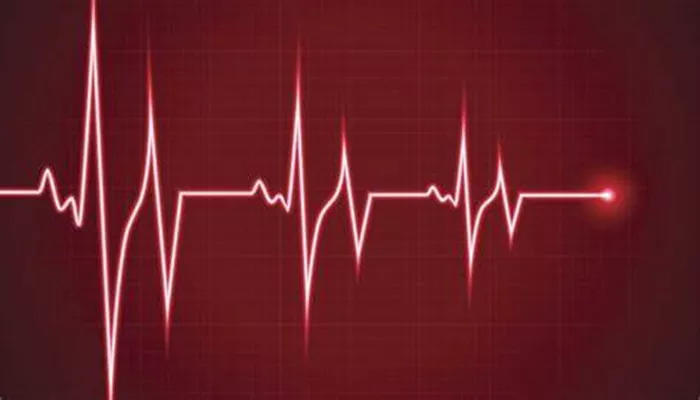Arrhythmia, also known as an irregular heartbeat, is a condition in which the heart beats too quickly, too slowly, or with an irregular pattern. While some arrhythmias may be harmless and go unnoticed, others can be serious and even life-threatening. Detecting arrhythmia early is crucial for effective management and treatment. This article will guide you through the process of checking for arrhythmia, the symptoms to look out for, diagnostic methods, and when to seek medical help.
What Is Arrhythmia?
Arrhythmia is a broad term that encompasses various types of irregular heartbeats. These include:
Tachycardia: A fast heart rate, usually over 100 beats per minute.
Bradycardia: A slow heart rate, usually less than 60 beats per minute.
Atrial Fibrillation (AFib): A rapid and irregular heartbeat originating from the atria.
Ventricular Fibrillation: A severe form of arrhythmia originating from the ventricles, which can be life-threatening.
Premature Beats: Extra beats that occur earlier than the next expected normal heartbeat.
SEE ALSO: How to Calculate Heart Rate in Arrhythmia
Causes of Arrhythmia
Arrhythmias can be caused by a variety of factors, including:
Heart disease: Coronary artery disease, heart attack, and heart failure.
Electrolyte imbalances: Imbalances in minerals like potassium, sodium, calcium, and magnesium.
Medications: Certain drugs can cause arrhythmias as a side effect.
Lifestyle factors: Stress, caffeine, alcohol, and smoking.
Other medical conditions: Thyroid problems, sleep apnea, and diabetes.
Symptoms of Arrhythmia
Common Symptoms
Recognizing the symptoms of arrhythmia is the first step in checking for this condition. Common symptoms include:
Palpitations: A sensation of fluttering or pounding in the chest.
Dizziness or lightheadedness: Feeling faint or unsteady.
Shortness of breath: Difficulty breathing during normal activities.
Chest pain: Discomfort or pain in the chest area.
Fatigue: Unusual tiredness or weakness.
Sweating: Unexplained sweating, especially during episodes of irregular heartbeat.
When Symptoms are Subtle
Sometimes, arrhythmias may present with subtle or no symptoms, especially in the early stages. Regular monitoring and check-ups are essential, particularly if you have risk factors for heart disease.
Self-Checking for Arrhythmia
Pulse Check
One of the simplest methods to check for arrhythmia at home is by taking your pulse. Follow these steps:
Find your pulse: You can check your pulse at your wrist (radial artery) or neck (carotid artery).
Count your beats: Use a clock or stopwatch to count the number of beats in 60 seconds.
Assess the rhythm: Note whether the beats are regular or irregular.
Using a Blood Pressure Monitor
Many modern blood pressure monitors also detect irregular heartbeats. Follow the instructions provided with the device to measure your blood pressure and check for arrhythmias.
Smartphone Apps and Wearable Devices
Advancements in technology have made it easier to monitor your heart rhythm using smartphone apps and wearable devices like smartwatches. These devices can provide real-time data and alerts if an irregular heartbeat is detected.
Medical Diagnostic Methods
Electrocardiogram (ECG or EKG)
An ECG is a primary diagnostic tool for detecting arrhythmias. It records the electrical activity of your heart and provides detailed information about your heart’s rhythm and structure.
Resting ECG: A quick and non-invasive test performed while you are lying down.
Holter Monitor: A portable device worn for 24-48 hours to monitor your heart rhythm continuously.
Event Monitor: Similar to a Holter monitor but used for longer periods to capture intermittent arrhythmias.
Echocardiogram
An echocardiogram uses ultrasound waves to create images of your heart, helping to identify structural issues and assess heart function.
Stress Test
A stress test evaluates your heart’s response to physical activity. It involves walking on a treadmill or riding a stationary bike while your heart rate and rhythm are monitored.
Electrophysiological Study (EPS)
An EPS is a more invasive procedure used to diagnose complex arrhythmias. It involves threading catheters through blood vessels to your heart to study its electrical activity.
When to Seek Medical Help
Emergency Situations
Seek immediate medical attention if you experience:
Severe chest pain
Fainting or near-fainting spells
Persistent shortness of breath
Rapid or irregular heartbeat that lasts more than a few minutes
Routine Check-Ups
Regular check-ups with your healthcare provider are essential, especially if you have risk factors for heart disease. They can perform routine screenings and provide guidance on managing your heart health.
Managing Arrhythmia
Lifestyle Changes
Making healthy lifestyle changes can help manage and prevent arrhythmias. These include:
Healthy diet: Eating a balanced diet rich in fruits, vegetables, whole grains, and lean proteins.
Regular exercise: Engaging in regular physical activity to maintain cardiovascular health.
Avoiding triggers: Limiting caffeine, alcohol, and avoiding smoking.
Stress management: Practicing relaxation techniques like meditation and yoga.
Medications
Your doctor may prescribe medications to control your heart rate and rhythm or to prevent blood clots. Common medications include beta-blockers, calcium channel blockers, and anticoagulants.
Conclusion
Detecting and managing arrhythmia is crucial for maintaining heart health and preventing complications. By recognizing the symptoms, using self-check methods, and seeking medical help when necessary, you can effectively monitor and manage arrhythmias. Regular check-ups and a healthy lifestyle are key components in ensuring your heart remains in good condition.

